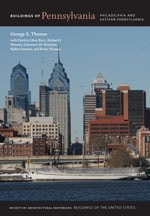After removing his business interests and his residence to Buffalo, New York, industrialist John Albright (founder of Buffalo's Albright-Knox Gallery) sent that city's foremost architects, whom he had commissioned for his gallery, to Scranton to design a public library on the site of his family home. Green and Wicks crafted an elegant French Renaissance structure modeled after the Hotel de Cluny in Paris and built in Indiana limestone with a black tile roof. The L-shaped building wraps a courtyard whose garden plan was originally by Frederick Law Olmsted. Its intimate interior is more indebted to the Richardsonian library tradition than to the openness of the Carnegie model: a series of cozy reading rooms with beautiful oak woodwork and beamed ceilings that pinwheel from an impressive stair hall. The barrel-vaulted second-floor reading room is particularly fine.
You are here
Albright Memorial Library
If SAH Archipedia has been useful to you, please consider supporting it.
SAH Archipedia tells the story of the United States through its buildings, landscapes, and cities. This freely available resource empowers the public with authoritative knowledge that deepens their understanding and appreciation of the built environment. But the Society of Architectural Historians, which created SAH Archipedia with University of Virginia Press, needs your support to maintain the high-caliber research, writing, photography, cartography, editing, design, and programming that make SAH Archipedia a trusted online resource available to all who value the history of place, heritage tourism, and learning.















